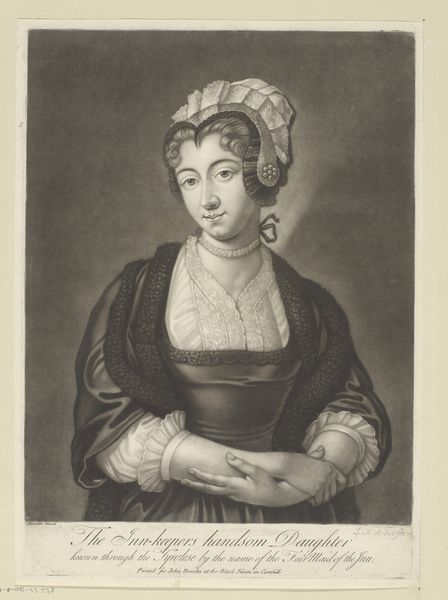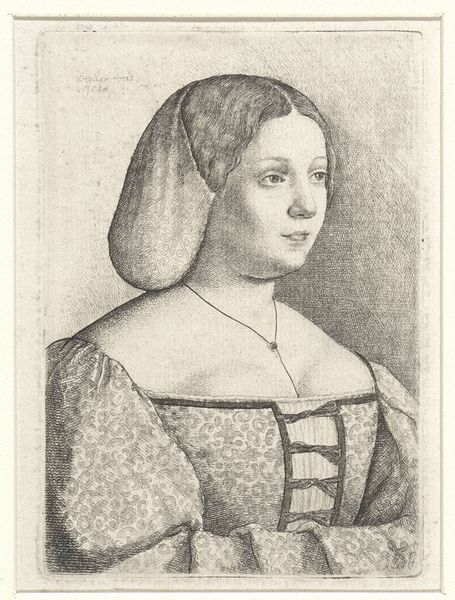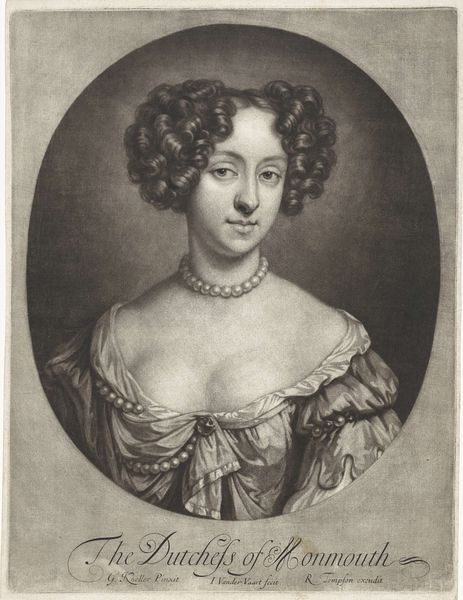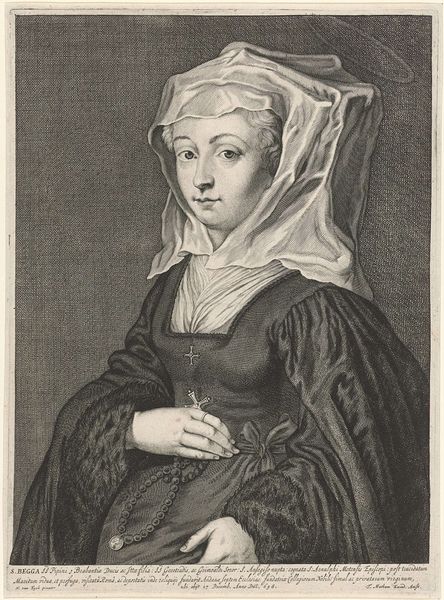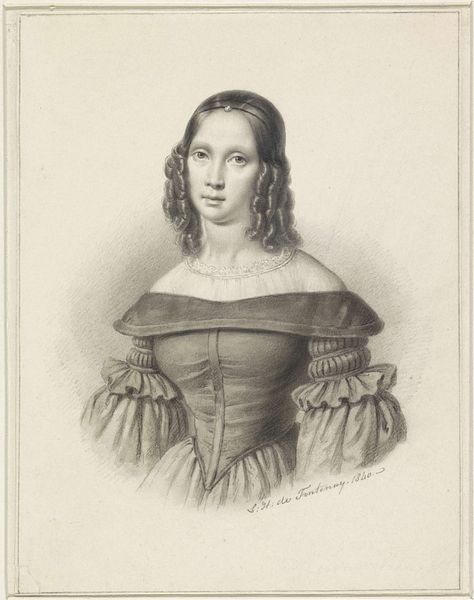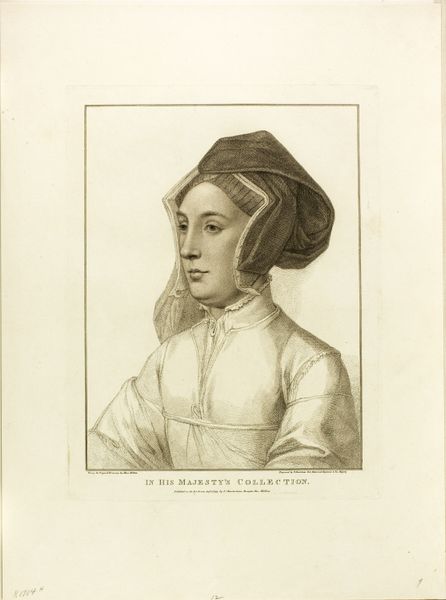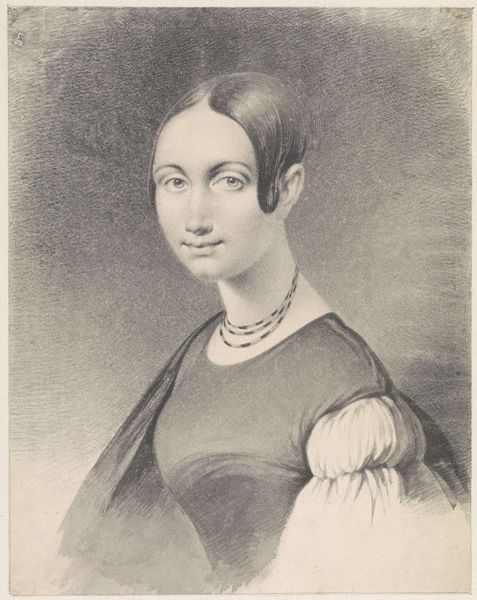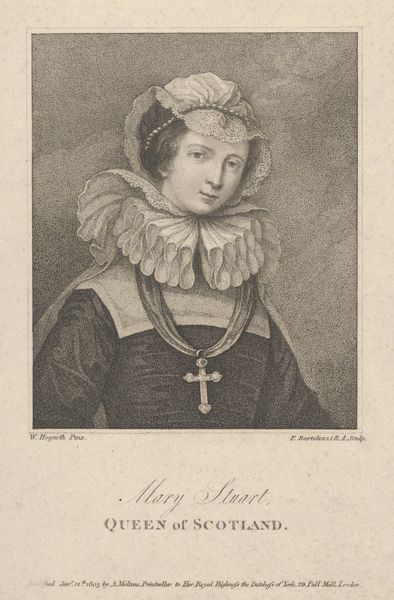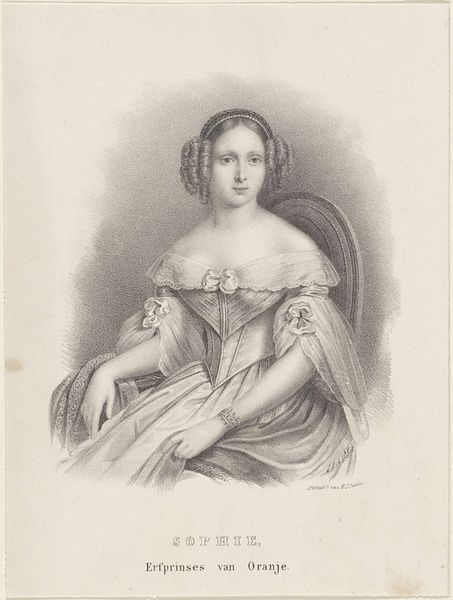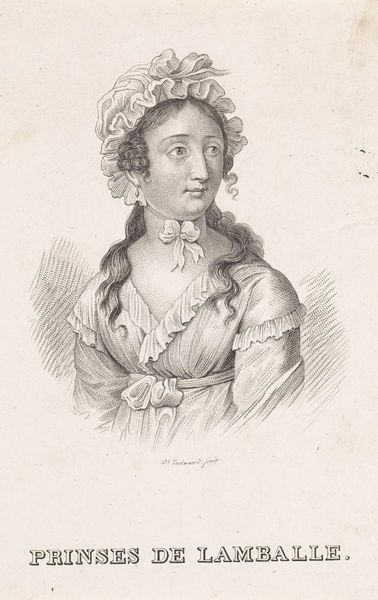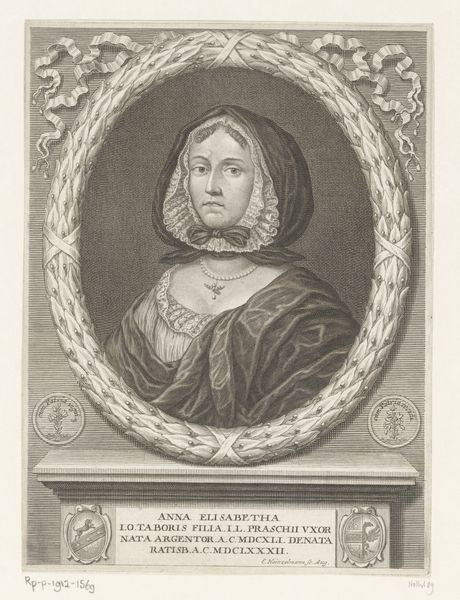
engraving
#
portrait
#
pencil drawn
#
neoclacissism
#
16_19th-century
#
pencil sketch
#
historical photography
#
portrait reference
#
pencil drawing
#
19th century
#
portrait drawing
#
history-painting
#
engraving
Dimensions: height 549 mm, width 422 mm
Copyright: Rijks Museum: Open Domain
Curator: Here we see an engraving, a portrait of Wilhelmina of Prussia dating roughly to between 1815 and 1899 by the artist Cardon. What are your initial impressions? Editor: Cool, austere. There's a stark quality to the light and shadow that, while formal, gives the subject a rather detached, almost melancholy air. It reminds me of contemporaneous photographic portraits capturing a somber kind of royal detachment. Curator: Note the artist's precise rendering of the elaborate ruff and headwear, and the pearls. The crisp linearity and controlled gradations create an almost palpable sense of texture and weight. Consider how these repeated circular and folded forms create an elaborate composition, and how that might reflect the subject's status. Editor: Absolutely, but consider how the portrait would've functioned. Wilhelmina, Queen of the Netherlands by marriage, experienced a tumultuous time politically, her husband essentially losing the Austrian Netherlands to Napoleonic France. Seeing her portrayed like this reinforces that sense of stoic composure in the face of events, the control necessary to survive that era of rapid shifts in power and national identity. Curator: That's an astute observation. And what about the balance, the precise rendering? Think of how Neoclassicism privileged line, clarity, and idealized forms over painterly brushwork and overt emotionality. Look at how the lines delineate shape, creating volumes through controlled strokes. It projects that idea of timeless, unflinching authority. Editor: Although the printmaking would have served a propagandistic role, allowing this image to be disseminated. Each print a subtle but constant reminder of her presence and role at that crucial point in Dutch history, literally embedding her within the daily lives of her subjects through printed image and memory. It’s interesting how art functions within that social theatre. Curator: So, by examining its form and social function, we get a deeper sense of this Wilhelmina, Queen Consort but also a composed projection of monarchical power, in printed form, rendered meticulously in ink, but equally representative of a life and history far more intricate than what appears. Editor: Exactly. She becomes both an image and a statement about Dutch identity during a key transitional era.
Comments
No comments
Be the first to comment and join the conversation on the ultimate creative platform.
